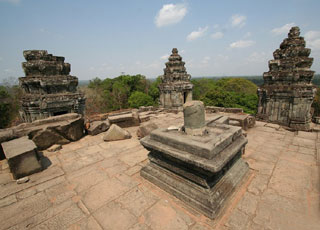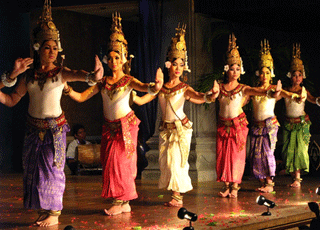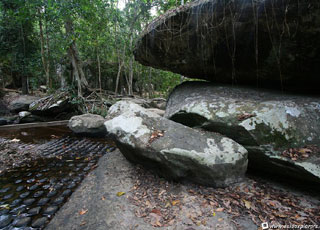
Kunlen mount is situated at north east of Angkor Complex about 50 Km, it takes approximately 2 hours drive up to the hill top with 487 meters height and plateau stretches 30 km long, it is opened for tourists in 1999 by private owned and charged for $20 toll per foreign visitors. The company developed road up to the peak. It is only possible to go up before 11 Am and only possible to come down after midday, to avoid vehicles meeting on the narrow road.






